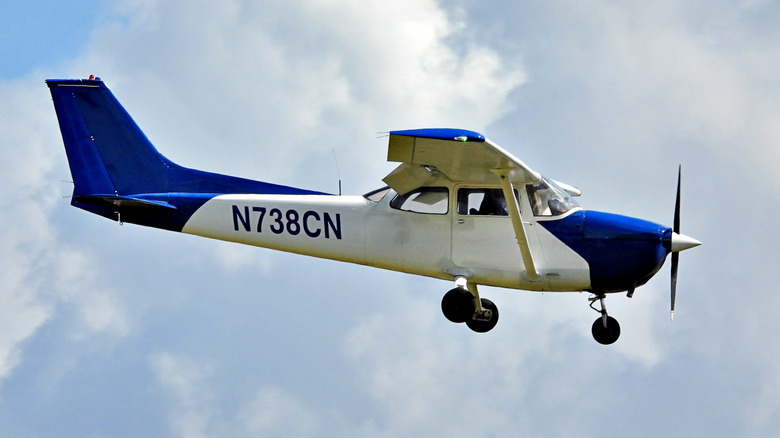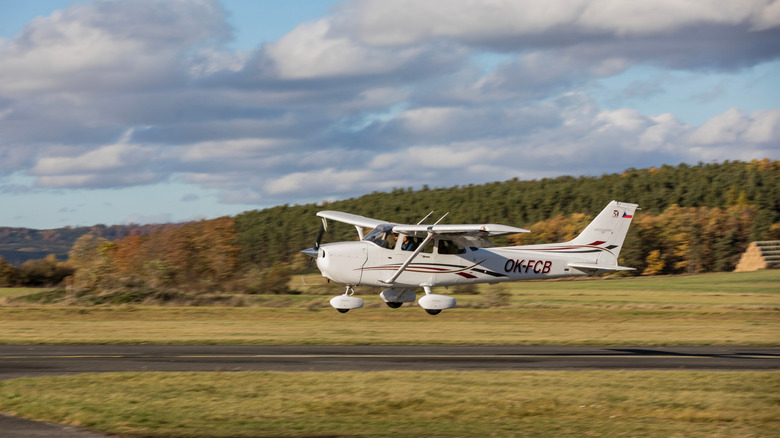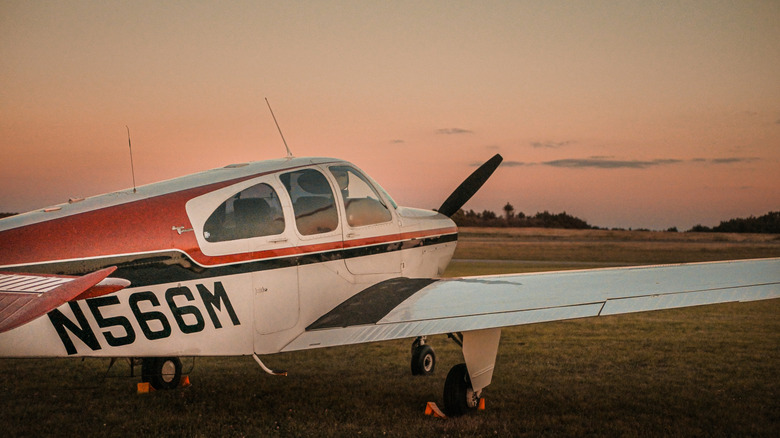What Is An Impossible Turn In Aviation And Why Is It So Risky?
Millions of travelers around the world are able to have safe and uneventful flights every day, and this is an enormous testament to the skill, experience, and knowledge of the crew that make it all happen. The key to achieving this is, wherever possible, eliminating variables and mitigating risks. Despite this diligence, and though flight is often considered one of the safest ways to travel, emergencies can and do happen.
Taking off is a particularly critical and potentially dangerous phase of the flight, as Allied Pilots Association spokesman Dennis Tajer explained to CNN Travel: "For the actual flying for takeoff, you're at a heavier weight. You're accelerating from zero to the speed of being able to fly." Should there be an issue during takeoff or ascent, one potential option open to a pilot is the so-called impossible turn. This involves a dramatic turn to land the aircraft back on the same runway it just left. As Pilot Institute notes, it's very possible that, depending on the timing of the engines losing power or similar calamity, the aircraft may not have gained enough height for the maneuver to be possible at all, but there's even more to worry about than that. While airliners may be able to fly with only one of their engines, a single-engine aircraft is in a worse position. Any pilot attempting this turn must continue angling the aircraft until it is on a safe and appropriate course to the runway. Factoring in other contributory elements like the angle of attack and the angle of wind and how it could affect the course of the aircraft, all while coordinating crew on board, is vital.
The impossible turn isn't strictly impossible
In certain circumstances, some pilots have performed the impossible turn successfully. In 2016, private pilot Dave Keller told the Air Safety Institute of one case in which he did just that. Keller explained that he had left the runway of Anderson Municipal Airport when, approaching 500 feet in the air, the cylinder of his engine was compromised. He alerted air traffic control to the situation, then explained his immediate response to the danger he was in: "I instinctively turned the plane around. I made a right turn and began a gradual descent." In performing the turn itself, he added, "I was trying to clear the trees in the shortest distance and that took me almost perpendicular to the runway." Though Keller succeeded in landing the aircraft, he acknowledged that the technique was very dangerous, and he didn't make the optimal choice in doing so. "I took a chance and I was fortunate," the pilot said, stating that the risk of an emergency landing can be considerably lessened if the pilot chooses a location to stage one ahead of them instead.
Not impossible, then, but generally impractical and riskier than alternative measures. A primary issue is that, according to the AOPA, it's a multi-layered procedure consisting of a steep turn and similarly extreme low angling of the aircraft's nose, as both turning widely enough and quickly enough is a very delicate procedure. The body notes that, in the case of the Cessna 172, it would be necessary to be approximately 500 feet in the air at the time of the aircraft fault in order to simply have enough time and space to pull off an impossible turn. The Cessna 172 is an aircraft of relatively modest top speed and size.
Safer alternatives to performing an impossible turn
The impossible turn, then, isn't strictly impossible, though it's certainly incredibly difficult and would only be performed on a flight if there was no other alternative for the pilot and crew. It's all about the safest approach to a situation possible, and this will generally mean taking a different route. There is less inherent risk in continuing the course as far as possible but making a forced landing wherever terrain permits.
Aviation safety researcher Pat Veillette explained to the Aviation Safety journal, "The engine failure, your shock, and the rapid loss of airspeed and altitude all seem to happen with lightning speed." Though the average response to an emergency is four seconds, the Pilot Institute adds, this is a situation in which, even if the crew's response is fast and optimal, an attempt at an impossible turn could end in tragedy, due to factors such as the wind influencing the aircraft's movement, potentially making the maneuver more or less challenging. Size of the aircraft will also play a significant part, with the outlet suggesting that a larger Beechcraft Bonanza, for instance, might need an additional 500 feet or so of height to perform it safely over a Cessna 172.
This isn't to say, though, that an impossible turn should strictly never be performed. In very extreme circumstances, a pilot needs access to every option, every little advantage possible. Such a turn can be one of those options. The Federal Aviation Administration, in an Advisor Circular of September 2018, noted that instructors should teach trainees how to perform such a turn, but, equally, that they should learn not to do so "unless altitude, best glide requirements, and pilot skill allow for a safe return."


